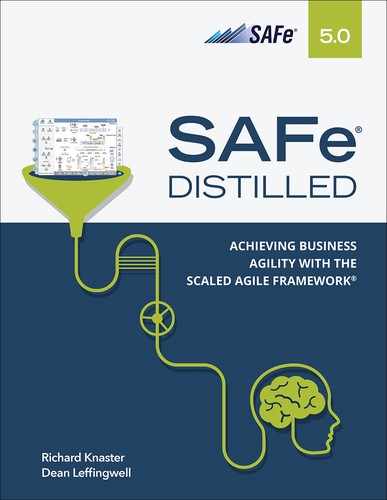Book Description
SAFe® 5.0: The World's Leading Framework for Business Agility
"Those who master large-scale software delivery will define the economic landscape of the twenty-first century. SAFe 5.0 is a monumental release that I am convinced will be key in helping countless enterprise organizations succeed in their shift from project to product."
–Dr. Mik Kersten, CEO of Tasktop and author of the book Project to Product
Business agility is the ability to compete and thrive in the digital age by quickly responding to unprecedented market changes, threats, and emerging opportunities with innovative business solutions.
SAFe® 5.0 Distilled: Achieving Business Agility with Scaled Agile Framework® explains how adopting SAFe helps enterprises use the power of Agile, Lean, and DevOps to outflank the competition and deliver complex, technology-based business solutions in the shortest possible time.
This book will help you:
Understand the business case for SAFe: its benefits, and the problems it solves
Learn the technical, organizational and leadership competencies needed for business agility
Refocus on customer centricity with design thinking
Better align strategy and execution with Lean Portfolio Management
Learn the leadership skills needed to thrive in the digital age
Increase the flow of value to customers with value stream networks
Register your book for convenient access to downloads, updates, and/or corrections as they become available. See inside book for details.
Table of Contents
- Cover Page
- About This eBook
- Halftitle Page
- Title Page
- Copyright Page
- Dedication Page
- Contents
- Preface
- Acknowledgments
- About the Authors
- Part I: Competing in the Age of Software
- 1. Business Agility
- 2. Introduction to SAFe
- 3. Lean-Agile Mindset
- 4. SAFe Principles
- Why Focus on Principles?
- Principle #1: Take an Economic View
- Principle #2: Apply Systems Thinking
- Principle #3: Assume Variability; Preserve Options
- Principle #4: Build Incrementally with Fast, Integrated Learning Cycles
- Principle #5: Base Milestones on Objective Evaluation of Working Systems
- Principle #6: Visualize and Limit WIP, Reduce Batch Sizes, and Manage Queue Lengths
- Principle #7: Apply Cadence; Synchronize with Cross-Domain Planning
- Principle #8: Unlock the Intrinsic Motivation of Knowledge Workers
- Principle #9: Decentralize Decision-Making
- Principle #10: Organize Around Value
- Summary
- Part II: The Seven Core Competencies of the Lean Enterprise
- Part III: Implementing SAFe, Measure and Grow
- Glossary
- Index
- Credits
